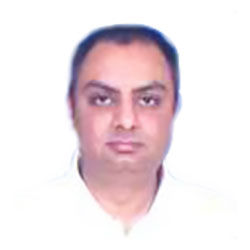


Mr. Utkarsha Parikh

It is a growing industry worldwide. And, I think according to the American Geosynthetic society data, the industry USA is supposed to grow at about 12-15% per annum. Whereas in India, the growth forecasted is 20-25% per annum. The industry in India, at this stage, is still at the tip of the iceberg. So there’s a lot of scope in the Indian market because a lot of sectors are not yet explored. Currently, the applications that are going on are more on the coastal side or on the environmental side, so this sector has not picked up the geosynthetic market. I see that should happen in a couple of years and then I think India has got 10-15 years more in the geosynthetic industry.
Currently, we are working majorly on the civil and environmental side. We have products for the civil industry as well as on the environmental side so; major applications are roads, environmental applications like landfills, coastal protection, river taining, etc. So, this is what we do right now. We are currently engaged with 2 products in India – woven geotextiles and nonwoven geotextiles. Currently, through a contractor, we have gained a couple of projects in India. So we are working on these projects on the eastern coast of India, wherein we are supplying our textiles which are getting converted into geobags. And, it is basically a river sailing project.
The first thing that is missing is that there is no common senses on getting into the right product. So there is a lot of lack of education on the Govt. side as well. When you approach an engineer or a contractor who is dealing with the govt, they do not understand the actual application of the geosynthetics. So end of the day, a wrong product is specified and a wrong product is being supplied. India is more driven by the GSM i.e. the weight rather than going into other technical specifications like strength, water-flow etc. Secondly, there is no goods-testing laboratory in the country. So we need to have a couple of labs which should certify the products and that the manufacturers should have their products approved by the labs at least twice or thrice a year so that they can better the products. There should be a common ground where all the manufacturers come together and they ensure that quality product is supplied to the projects. Currently we need and prefer the extended TUFS policy. The TUFS policy has already come to an end as all the money has exhausted otherwise it was going to lapse in March 2012. Since the money has already exhausted, I think if they should renew the TUFS because there is a lot investment that is coming to India in the next couple of years in the Technical Textiles (geotextiles, meditech and so on). They should extend it for another 5 years and it could be sector specific.
Mergers & Acquisitions and Technology transfer from developed economies to developing economies is surely going to happen. Today, India does not have the technology to get into this field. We are always dependent on outside technologies whether it is from USA or from Germany because we have been into the industry and it is getting recognition only since the last couple of years. People have been working since the last 10 years but if you see in the developed countries, people are in the industry since the last 25 years. So the knowledge and wealth of technology that they have is much more superior to what we can develop here. So there is going to be a lot of technology transfer, there is going to be lot of partnerships in just giving the technology, there would be partnerships for just technical support, so that is going to be the trend.
My foremost expectation and request to the Finance Minister would be to get the TUFS approved again so that the investments can come in.
DISCLAIMER: All views and opinions expressed in this column are solely of the interviewee, and they do not reflect in any way the opinion of technicaltextile.net.